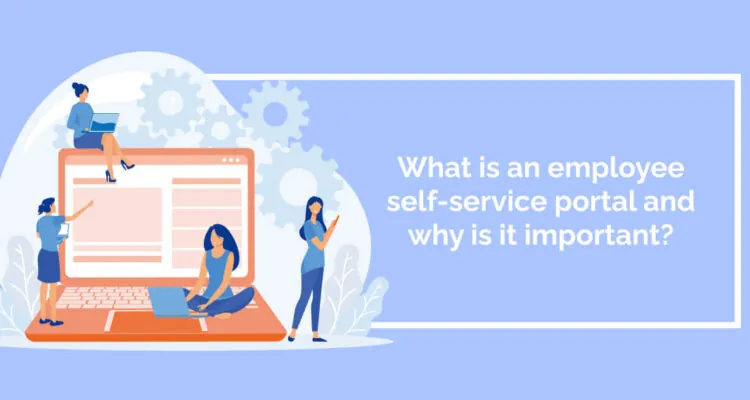
Employee self-service (ESS) platforms serve as centralized digital hubs that enable staff members to manage various human resources (HR) independently functions through an online interface.
These portals make it easier to distribute HR-related documents, streamline payroll processing, and simplify the onboarding training process.
Companies can achieve sustained productivity and cost-efficiency improvements by integrating ESS systems into their operations.
Within this article, you will explore:
- What an employee self-service portal is and how it works in practice
- The key features of an employee self-service portal
- The benefits of an employee self-service portal
- How an employee self-service portal improves workplace productivity
- How your business can enhance the implementation of an employee self-service portal
What is an employee self-service portal?
An employee self-service (ESS) portal is a web-based system that enables staff to manage their personal records, request leave, and access payment documentation online. This system benefits staff and management, promoting organization and transparent communication.
When considering implementing an ESS system for your company, selecting a suitable platform is essential. With numerous systems available, thorough research is vital to identify one that aligns with your company’s specific requirements.
ESS solutions address challenges for HR teams and employees, easing HR operations and granting employees more control and insight into their personal HR information.
These systems are integral to broader employee engagement initiatives, enhancing the HR workflow, improving the overall work experience, and contributing to a more streamlined, productive, and economically efficient organization.
Examples of employee self-service portals that enable employees to proactively engage with their HR and IT tasks from any location include:
How does an employee self-service portal work?
Employee self-service (ESS) platforms are typically integrated into a company’s intranet or a specialized HR portal. Access is secured through login credentials distributed during the rollout of the HR system.
Once logged in, employees have control over handling their employment details. The advent of HR mobile apps has further elevated the convenience of ESS portals, enabling access on various devices.
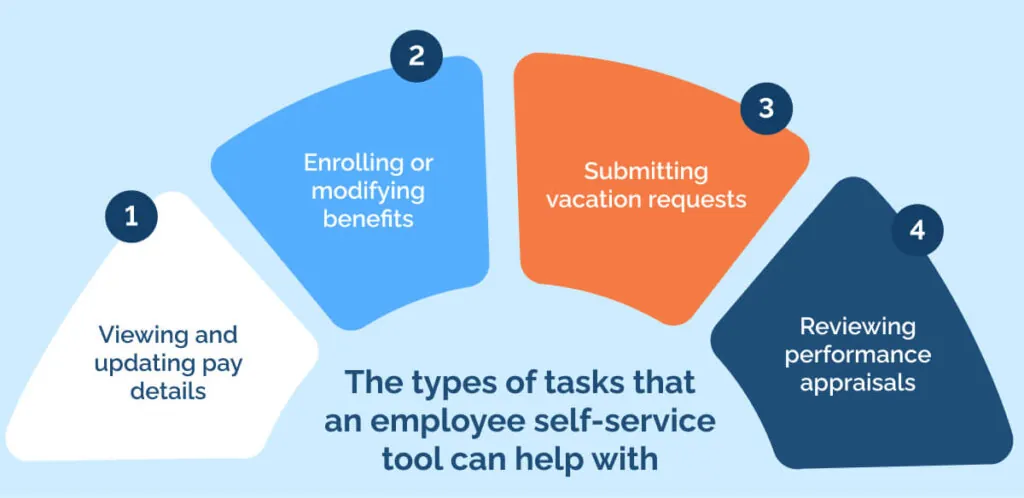
Employees can independently manage a variety of tasks, which include:
- Viewing and updating pay details
- Enrolling or modifying benefits
- Submitting vacation requests
- Reviewing performance appraisals
Each organization will have unique ESS needs depending on size, industry, and specific objectives. Identifying these needs is critical to ensure the chosen ESS portal meets them effectively.
Small and medium-sized businesses (SMBs) may opt for an ESS with straightforward ‘plug-and-play’ capabilities for routine tasks like leave applications and personal data updates. ‘Basic’ does not imply limited capability; many ESS solutions for SMBs offer robust features like document handling and process automation.
Larger enterprises may require more complex features, such as Manager Self-Service (MSS), which provides managers with tools to monitor their team’s performance and attendance more closely.
Key features of employee self-service portal
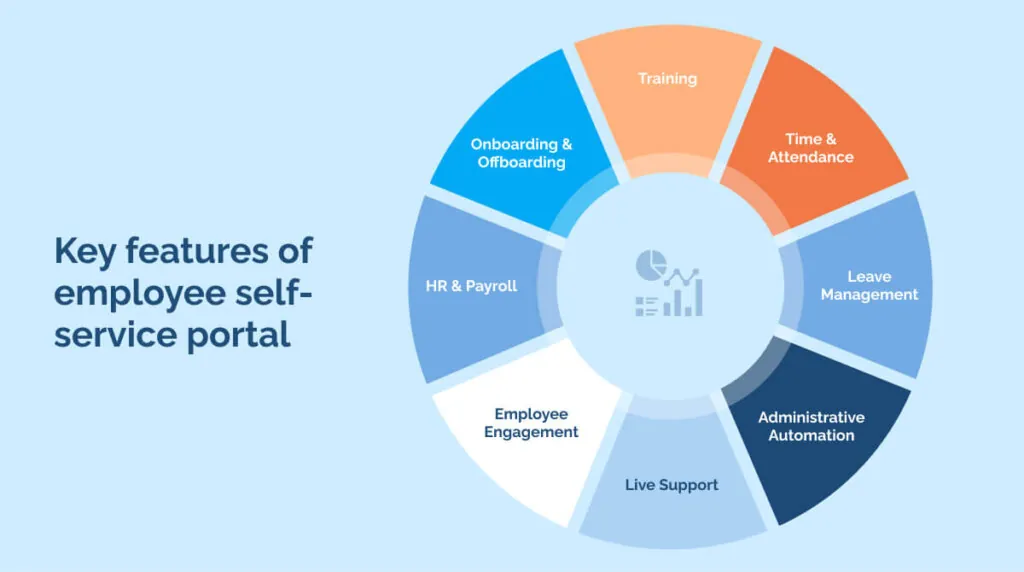
Employee Self-Service (ESS) Portals empower employees to access and manage their employment information, fostering a sense of ownership over their career paths.
The typical critical features of an ESS portal are:
- HR & Payroll: ESS Portals allow employees to update personal details and manage leave, enhancing their involvement in HR processes.
- Onboarding & Offboarding: The portals facilitate the submission of onboarding documents and address updates, ensuring a smooth transition for employees relocating within the company.
- Training: ESS systems enable various employee training methods that streamline the dissemination of training material directly to employees, ensuring that essential information is received and retained.
- Time & Attendance: ESS platforms provide time-tracking features allowing employees to record their work hours, aiding in accurate record-keeping for full-time staff and hourly contractors.
- Leave Management: Employees can monitor their leave balances, track time-off records, and view payslips, which helps in planning and managing their time away from work.
- Administrative Automation: ESS portals can automate repetitive tasks, enabling the secure sharing of information and reducing the administrative burden on HR departments.
- Live Support: Live chat integration within ESS allows real-time support, with employees selecting topics from a set list for immediate assistance.
- Employee Engagement: The inclusion of forums within an employee self-service portal platform offers a space for employees to collaborate and contribute to problem-solving, enhancing engagement and community within the workplace.
Benefits of employee self-service portal
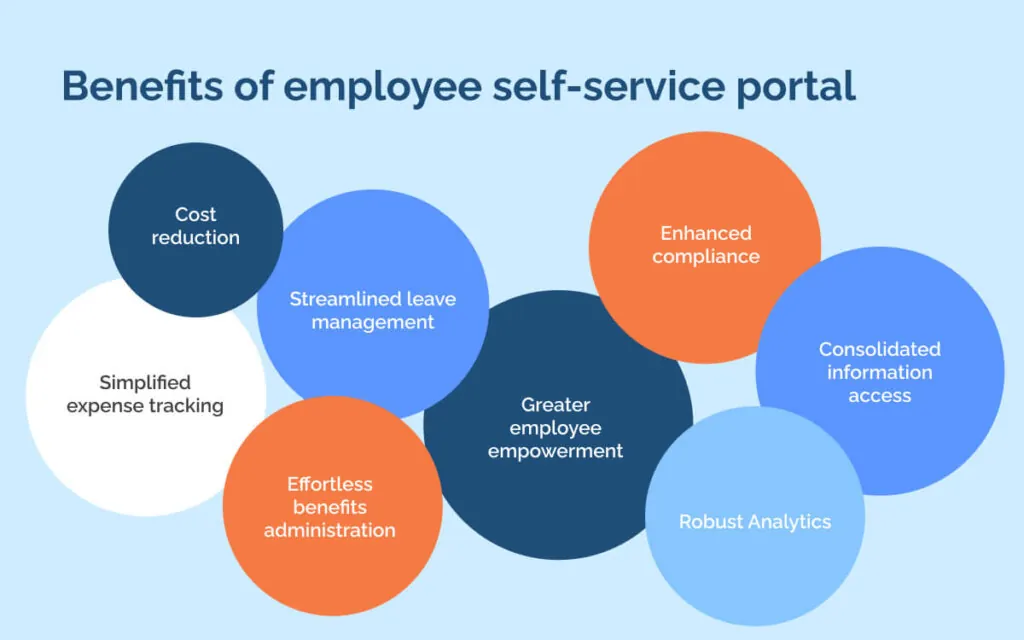
An employee self-service portal will not replace an HR team but will enhance it by removing repetitive tasks and granting employees direct HR access. This brings several benefits to an ESS-integrated organization:
Cost reduction
By alleviating the headache of routine inquiries and data processing from HR, ESS allows the department to focus on strategic roles and minimizes the need for additional staff.
Streamlined leave management
ESS makes it easier to automate leave requests, enabling employees to track and manage their time off while allowing managers to oversee absence patterns more effectively.
Simplified expense tracking
ESS simplifies expense reporting and approval and allows employees to manage their expenses remotely, ensuring efficient handling even when traveling.
Effortless benefits administration
An employee self-service portal provides a central hub for employees to manage their benefits, including reviewing coverage and contributions and streamlining benefits administration.
Greater employee empowerment
ESS fosters a more engaged workforce that can self-manage HR-related tasks by allowing employees to use personalized portals.
Enhanced compliance
Employee self-service platforms help maintain accurate compliance records, automate reporting, format compliance information, and update users on legislative changes, which reduces the risk of penalties.
Consolidated information access
A unified HR database via ESS ensures all employees access to necessary information and documents.
Robust Analytics
ESS gathers extensive data, enabling managers to utilize built-in analytics to assess initiatives and inform future decisions with concrete HR insights.
How can employee self-service portals improve workplace productivity?
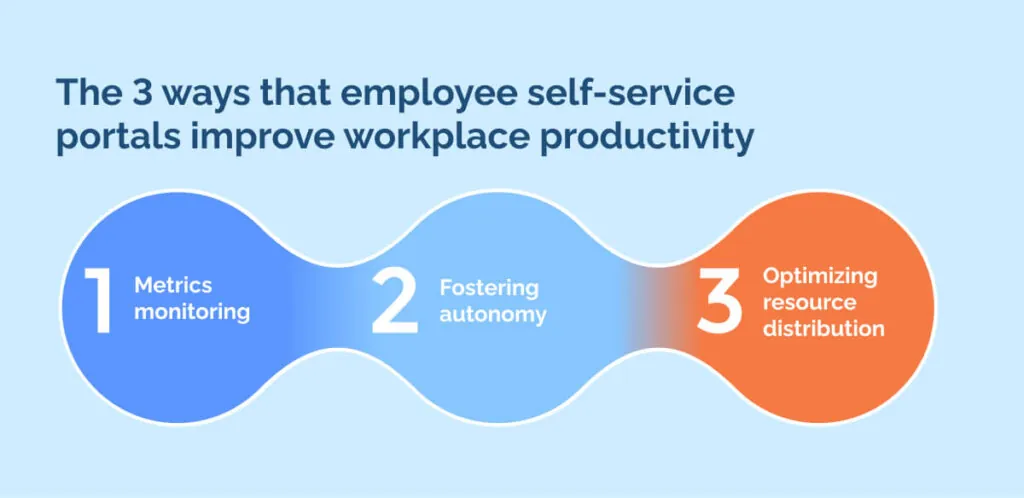
Employee self-service platforms improve workplace efficiency in several ways:
Metrics monitoring
By tracking key employee performance metrics like productivity rates or engagement levels, employee self-service platforms help assess progress toward financial goals and the effectiveness of business strategies.
Identifying and addressing inefficiencies, such as lengthy recruitment processes, through strategies like talent pipeline development or interview automation can lead to cost savings and enhanced efficiency.
Fostering autonomy
Self-service platforms enable new hires to onboard with minimal supervision, using checklists and digital forms, which promotes independent work. This reduces the need for in-person meetings with management, allowing employees to focus and increase productivity during work hours.
Optimizing resource distribution
By streamlining HR functions, employee self-service platforms allow for better allocation of resources.
Savings from more efficient HR processes can be reinvested in critical areas like advanced equipment or competitive salaries for key staff, driving long-term productivity without additional expenses.
Improving the implementation of an employee self-service portal
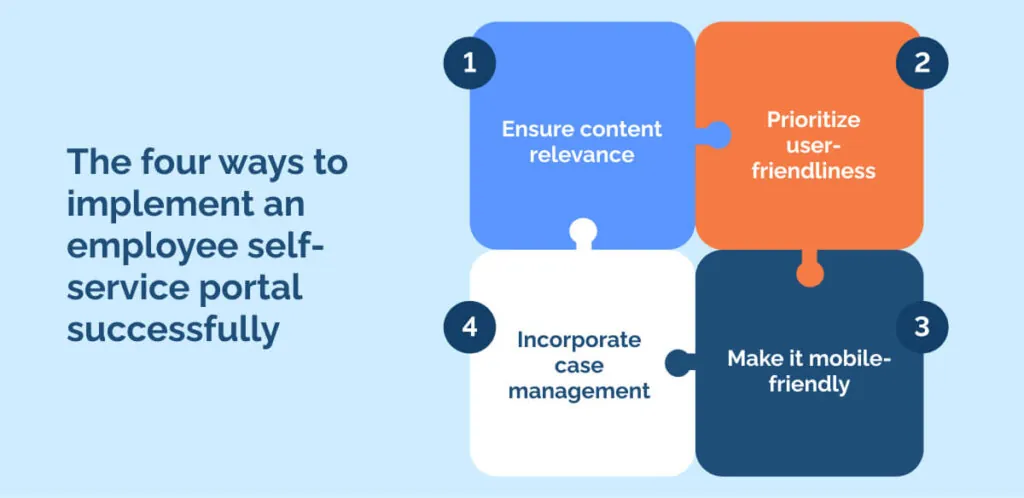
For organizations looking to improve their employee self-service portal capabilities, consider these guidelines below:
Ensure content relevance
The knowledge base is a crucial element of ESS systems.
Tailoring this content to meet your organization’s and industry’s specific needs is crucial. Use common employee inquiries and search-engine analytics to populate your knowledge base with relevant, comprehensive information.
You can also consider using interactive walkthrough software to train your employees on this technology and how it can be utilized in their day-to-day duties.
Prioritize user-friendliness
An ESS should be informative, yet easily navigable. A user-friendly interface with intuitive design and efficient search capabilities is essential for a positive user experience.
Make it mobile-friendly
A mobile-responsive employee self-service portal extends flexibility to employees, allowing them to handle their tasks remotely.
This benefits a distributed workforce, ensuring full ESS functionality via a mobile app or a mobile-optimized browser interface.
Incorporate case management
In addition to making it easier to find relevant organizational information, an ESS should facilitate case management by automating requests and providing step-by-step guidance.
Integrating case management within ESS streamlines support and prevents the need for separate systems, offering employees a seamless experience.
The future of an employee self-service portal
Implementing an employee self-service (ESS) portal streamlines operations by granting staff quick access to essential information and self-management of tasks, such as health insurance updates and leave requests. This consolidation reduces the administrative burden and decreases daily email queries.
Accessible from any location, an employee self-service portal allows employees to manage their affairs without needing specific equipment, optimizing their time even when away from the workplace.
While an ESS portal can enhance the customer experience by providing users with more direct online interaction with the company, effective utilization of the system by staff requires proper training.
Despite an interface’s simplicity, comprehensive training covering the various functions is crucial. Creating a digital adoption strategy can facilitate employee readiness, ensuring they are well-equipped to leverage the technology to its fullest potential.
WalkMe Team
WalkMe spearheaded the Digital Adoption Platform (DAP) for associations to use the maximum capacity of their advanced resources. Utilizing man-made consciousness, AI, and context-oriented direction, WalkMe adds a powerful UI layer to raise the computerized proficiency, everything being equal.



